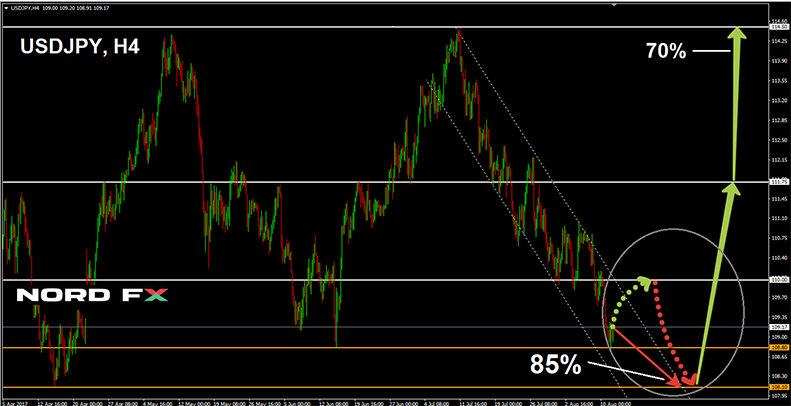First, a review of last week’s forecast:
- EUR/USD. It was not possible to have a more or less homogeneous forecast for this pair in the previous week. Whilst most experts looked to the north, graphical analysis unambiguously pointed to the south, naming 1.1670 as the nearest support level. Opinions of indicators were also divided: about half of the oscillators and trend indicators on H4 turned red, but on D1, the green continued to dominate. Thus, this discord was justified: at the beginning of the week, the pair grew a little, then it fell, reaching the local bottom at 1.1688, and went up again to the Pivot Point of the last two weeks in the 1.1820-1.1840 zone;
- GBP/USD. The overwhelming majority of analysts (75%), supported by graphical analysis and indicators on D1, spoke about the sideways movement of the pair. Indeed, the pair stayed in a horizontal trend for the whole week, although not exactly in the range where they had expected, the actual range being one level below. Just such a fall constituted what had been predicted by the remaining 25% of experts: the pair first descended to the horizon 1.2950 and only then moved to the east;
- The main forecast for USD/JPY claimed that the pair should go southwards about 200 points and reach the lower boundary of the mid-term side corridor in the 108.10-108.80 zone. This forecast turned out to be 100% true, and the pair, having descended exactly 200 points, fixed the week minimum at the level of 108.73;
- The forecast for USD/CHF also fully came true. Recall that 35% of analysts and the vast majority of indicators indicated that the pair would attempt to gain a foothold above the level of 0.9765. On Tuesday, the pair broke through this resistance, after which it fell, just as most experts had predicted, reaching support at 0.9600 by the end of the week's session.
As for the forecast for the coming week, summarizing the opinions of analysts from a number of banks and brokerages, as well as forecasts made on the basis of a variety of methods of technical and graphical analysis, we can say the following:
- EUR/USD. Like last week, the views of the majority of experts (65%) are turned to the north. Supported by graphical analysis and 80% of indicators, they expect the pair to grow to 1.1900-1.2000. Only 35% of analysts expect the pair to fall. However, graphical analysis and a number of oscillators on D1 already side with them, they expect the pair to fall to the level of 1.1685, and then 100 points lower;
- GBP/USD. If you combine the opinions of analysts and technical analysis, you can still talk about a sideways trend here. The opinions of experts were divided 45% to 55% in favor of growth. Trend indicators on H4 are weighed at 60% in favour of growth, whilst on D1, they are strictly neutral. Oscillators on H4 are divided as follows: 50% suggest purchasing, 20% suggest selling, 30% are neutral; on D1, as many as 70% recommend selling. As for graphical analysis, on D1, it shows a side channel in the range 1.2890-1.3125.
In the medium term, the picture is somewhat different: here over 65% of experts vote for the fall of the pair to the zone of 1.2590-1.2810; - USD/JPY. Here, the vast majority of experts (85%) expect that the pair will continue its decline, aiming to reach the low of April 2017 at 108.12, after which it is expected to rebound to the horizon of 110.00. Bearish sentiment is also supported by 100% of the trend indicators. However, a quarter of oscillators on H4 and D1 give signals that the pair is oversold. Also, 15% of analysts and graphical analysis on H4 do not exclude a possible correction.
If we talk about the medium-term analysis, 70% of experts here expect the pair to return to the upper border (114.50) of the side corridor, in which the pair is moving starting from this winter;

- The last pair of our review is USD/CHF. Here, bearish sentiment dominates. 60% of experts, supported by graphical analysis and the overwhelming majority of indicators, expect the pair to fall to the zone of 0.9500-0.9550. As for the alternative point of view, which is expressed by the remaining 40% of analysts, the pair is expected to rise to the resistance at 0.9700, and, in case of its breakdown, by another 70 points. The 10% of oscillators who are giving signals that this pair is oversold can be considered bull supporters.
Roman Butko, NordFX
Go Back Go Back
